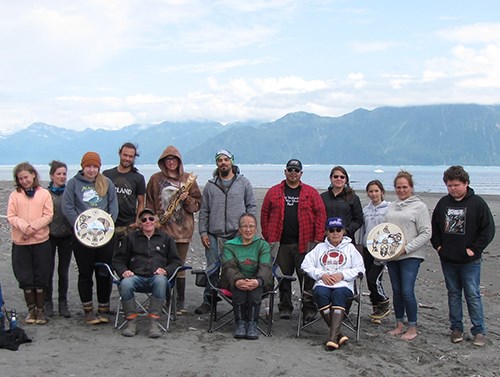
NPS/ Barbara Cellarius
The lands now called Wrangell-St. Elias National Park and Preserve have been home to Alaska Natives for thousands of years. Indigenous cultural sites are distributed throughout the entire park with the oldest known site, Nataeł Na’ (named for the traditional Ahtna place name for Tanada Creek), dating to approximately 13,000 years ago. These first inhabitants had an intimate knowledge of the landscape and subsisted off the land, developing travel and trade routes that crisscrossed the entire park, even traversing over the Bagley Ice Field, the largest nonpolar icefield in North America. Obsidian was collected from Wiki Peak, located in the northwestern corner of the park, for stone tool production. Native copper nuggets collected from glacial streams in the Chitina River drainage were cold hammered into tools and ornaments. (The name “Chitina” comes from the Ahtna words for copper (tsedi) and river (na)). Salmon, a seasonally available resource, was harvested along the Copper River and stored at winter village sites for sustenance throughout the long, harsh winters.
Today the Ahtna, Upper Tanana, Eyak and Tlingit are the four Alaska Native groups that call Wrangell-St. Elias their home and continue to live from the land and practice traditional subsistence activities. Their deep history and connection to the land is apparent through rich traditional knowledge, oral traditions, living memory, and the continued use and appreciation of the land.
Learn about remarkable individuals including Katie John and Chief Walter Northway and other people of the Upper Tanana Region. Interviews with Alaska Natives as well as those with ties to the park can be found in the park’s online oral history collection, Wrangell-St. Elias Oral Histories. Ethnographic information on Alaska Natives' connections with Wrangell-St. Elias is also available via An Ethnohistory of the Chisana River Basin and Yakutat Tlingit Ethnographic Study (including information on Mount St. Elias).
Visit the park website to learn more about human history and subsistence at Wrangell-St Elias National Park and Preserve.
Last updated: December 8, 2023
